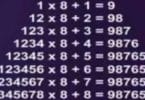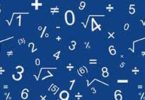Discrete mathematics questions and answers:
Which of the following is a Proposition?
(a) What time is it?
(b) Read this carefully
(c) x + 1 = 2
(d) 2 + 2 = 3
The bitwise AND of 01 and 11 is
(a) 01
(b) 11
(c) 10
(d) 00
p ^ q is true when
(a) Both p and q are true
(b) p is true and q is false
(c) p is false and q is true
(d) both p and q are false
If (x + 1, y – 3) = (3, 5), then x + 2y = __
(a) 2
(b) 16
(c) 18
(d) 20
Related: sets theory questions and answers
The bitwise XOR of the bitstrings 01 1011 0110 and 11 0001 1101 is
(a) 11 1011 1111
(b) 01 0001 0100
(c) 10 1010 1011
(d) 10 1000 1010
The length of the bit string 101010011 is
(a) 5
(b) 4
(c) 9
(d) 6
If (a + b, a – b) = (2, 4), then (a, b) = __
(a) (3, -1)
(b) (3, 1)
(c) (-3, 1)
(d) (-3, -1)
In the statement “x is greater than 3” the part “is greater than 3” is known as
(a) Subject
(b) Proposition
(c) Predicate
(d) Logical Operator
Related: Matrix mcqs
If n(A) = 3 and n(B) = 5, then n (A x B x A) = __
(a) 45
(b) 15
(c) 18
(d) 11
Determine which of these conditional statements is false.
(a) If 1 + 1 = 2 then 2 + 2 = 5
(b) If 1 + 1 = 3 then 2 + 2 = 4
(c) If 1 + 1 = 3 then 2 + 2 = 5
(d) If monkeys can fly, then 1 + 1 = 3
The final statement of the argument is called __
(a) Premise
(b) fallacy
(c) Conclusion
(d) valid
If (2x, x + y) = (8, 6) then y = __
(a) 4
(b) 2
(c) -2
(d) 5
Related: questions on mean median mode
Let Q(x,y) denote the statement “x = y + z”. Then Q(3,0) is
(a) 3 = 0
(b) 0 = 3 + 3
(c) 3 = 0 + 3
(d) 3 = 3 + 0
A statement that is being proposed to be a true statement usually on the basis of some partial evidence, a heuristic argument, or the intuition of an expert is known as __
(a) Theorem
(b) Proposition
(c) proof
(d) Conjecture
25 (mod 7) = __
(a) 14
(b) 7
(c) 4
(d) 25
Which of the following is not a Proposition?
(a) Toronto is the capital of India
(b) 1 + 1 = 2
(c) x + y = z
(d) You pass the course
Related: areas of parallelograms and triangles worksheet answers
A theorem that can be established directly from a theorem that has been proved is known as __
(a) Proposition
(b) Corollary
(c) Lemma
(d) Conjecture
Let R(x,y,z) be “x+y=z”. Then the true values of R(1,2,3) and R(0,0,1) are respectively.
(a) T and T
(b) T and F
(c) F and T
(d) F and F
If f(x) = ax + b and g(x) = cx +d, then f(g(x)) = g(f(x)) if and only if
(a) f(a) = g(c)
(b) f(b) = g(b)
(c) f(d) = g(b)
(d) f(c) = g(a)
A number that can be expressed as the ratio of two integers p and q such that q ≠ 0
(a) Real number
(b) rational number
(c) irrational number
(d) algebraic numbers
Related: quadratic equation exercise
Let P(x) be “x>3”. Then the true values of p(4) and p(2) are, respectively.
(a) T, F
(b) T, T
(c) F, T
(d) F, F






